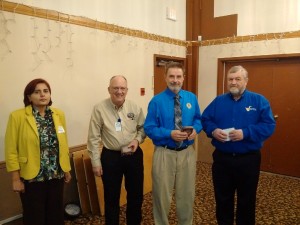Hazardous Location Standards for Canada
IEEE-NCS, IAS/PES Presents
Tuesday, January 26th, 2016, 6:00 to 9:00pm, doors open at 5:30pm
“Hazardous Location Standards for Canada”
Presented by: Tim Driscoll F.IEEE, Marty Cole SMIEEE, D. George Morlidge SMIEEE
Women in Engineering/ Young Professional opening talk “Smart Grid & WAMS” Presented by Vaishali Rampurkar
Technical Seminar Abstract:
The 2015 (23rd) Edition of the Canadian Electrical Code (CEC) has taken one step closer to the rest of the world and one step further away from the US National Electrical Code (NEC). For decades, both the CEC and NEC have used the term “Class” to identify the various types of hazardous materials. The 2015 CEC has removed the term “Class” from Section 18 and replaced it with the International Electrotechnical Commission (IEC) Zone system terms. Class I, which was changed in 1998 to include Zones, becomes simply Zones 0, 1 and 2. Class II and Class III were merged to become Zones 20, 21 and 22. Class II and III has been relocated to Annex J along with Class I for legacy facilities. Class/Division equipment can still be used, and Table J1.2 was updated to identify the types of equipment that can be used in both Zone and Division classified facilities.
All new installations must use the Zone system for area classification. In Alberta, the 2015 CEC comes into force January 2016, and the other western provinces in a similar timeframe.
The 2nd Edition of API RP505, Recommended Practice for Classification of Locations for Electrical Installations at Petroleum Facilities Classified as Class I, Zone 0, Zone 1 and Zone 2, is due for publication in early 2016. There are some significant changes from the 1st Edition, which will be discussed in this presentation.
There are a number of significant changes currently being discussed within the CEC Section 18 (Hazardous Locations) subcommittee for the 2018 CEC, and a preview of these will also be covered in this presentation.
Practical applications on area classification will be discussed, in particular, typical errors and over classifications that are made and the impact to those facilities. The role of combustible gas detection in area classification will also be included.
| Download the .pdf presentation here: IEEE SAS-NCS Seminar, HazLoc Jan 2016. | |
| Download the .pdf presentation here: IEEE WIE YP opening talk; Smart Grid Jan 2016. |
For more details for the event see the attached Notice.


